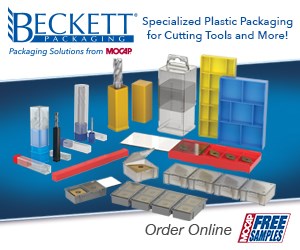Medical Edge: Thread Whirling
When my father slipped and fell on an icy parking lot 5 years ago and broke his hip, I would have never thought that someday I would be writing about how the screws surgically implanted in his hip bone were created on a metalworking machine. During the healing process, Dad had some irritation problems with the scre
When my father slipped and fell on an icy parking lot 5 years ago and broke his hip, I would have never thought that someday I would be writing about how the screws surgically implanted in his hip bone were created on a metalworking machine. During the healing process, Dad had some irritation problems with the screws, and therefore had them removed. Strangely enough, he showed these four long bone screws to me, and I remember being in awe of how long they were and how strange it seemed that they were once “screwed” into his hip bone, but like most people, I didn’t think twice about how these pieces of metal were created.
Because the medical industry is one industry that is not showing signs of slowing down any time soon (medical tools and parts will always be in high demand as long as baby boomers, generation xers, yers and zers continue to age), I thought it would be helpful to describe thread whirling this month, external thread whirling in particular, which is the process that is popular in creating quality threads on bone screws used in broken hips, like my father’s. Please continue to send me subjects you would like to know about for this column; an Inbox Insight reader recommended this hot topic.
An external thread whirling tool is a ring with cutting inserts mounted on the ID. The attachment that carries the tool turns at a high speed relative to the slower rotating workpiece. The ring is positioned slightly off center from the part so that a single cutter body with as many as 12 indexable inserts engages the work per rotation. This creates a nibbling action that produces burr-free threads. This thread pitch is set by the angle of the cutter ring to the workpiece.
Often CNC Swiss-type machines are the best machines for this process because the moving headstock feed can be programmed to synchronize with the thread-whirling attachment. For more information on thread whirling bone screws on a Swiss-type machine, read “Thread Whirling On The Subspindle." For a success story about a shop that installed thread whirling attachments on its Swiss screw machines, read “Boning Up On Thread Whirling’s Advantages.”
Thread whirling can be done as a separate operation as well. For information about a company that developed a line of multi-axis CNC machines designed specifically for whirling, read “Whirling As A Separate Operation.”
Like my father, who has benefited from these bone screws created by the process of thread whirling, injured folks in hospitals throughout the world benefit from these medical parts. Bone screws have become an important part of medical rehabilitation, and this metalworking technique has proven its value in their production.
Related Content
-
Repeatability and Rigidity Are Key for Quick-Change Swiss Tooling
A rotary wedge clamping system is said to enable this two-piece, modular tooling system for Swiss-types to offer the performance of a solid tool.
-
Parting Off: The Case for Standardizing on Sawing
The value of rotary saw cutting for parting off operations could boil down to simple economics paired with process efficiency gains.
-
Broaching Tool Technology For Lathes Used to Slot Inconel Parts
This shop finds value in using an indexable-insert-style broaching tool to create blind-hole slots in heat-treated Inconel aerospace parts on a CNC lathe.
















